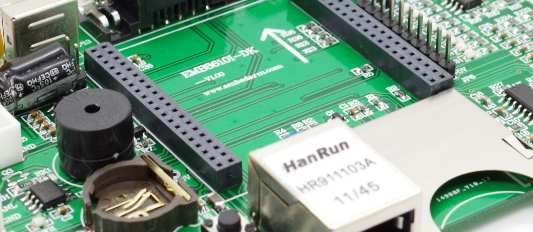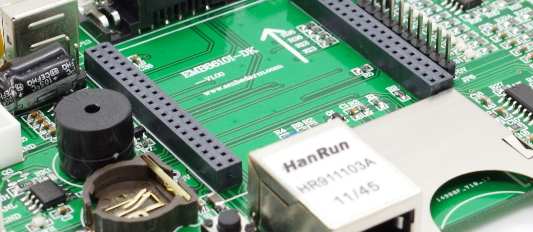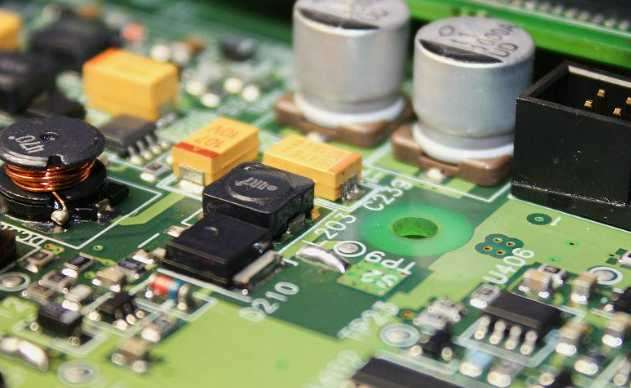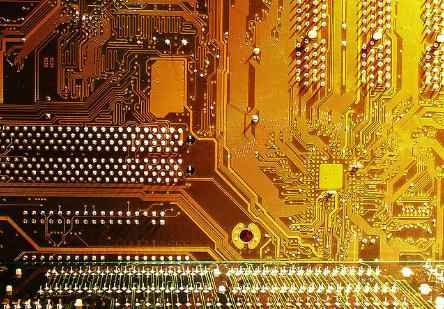
Electromagnetic compatibility refers to the ability of electronic devices to work harmoniously and effectively in various electromagnetic environments. The purpose of electromagnetic compatibility design is to enable electronic equipment to suppress various external interference, so that electronic equipment can work normally in a specific electromagnetic environment, and at the same time reduce the electromagnetic interference of electronic equipment itself on other electronic equipment.

1, choose a reasonable wire width
Since the impact interference caused by the transient current on the printed line is mainly caused by the inductive component of the printed wire, the inductance of the printed wire should be minimized. The inductance of the printed wire is proportional to its length and inversely proportional to its width, so a short and fine wire is advantageous for suppressing interference. Signal lines for clock leads, line drivers, or bus drivers often carry large transient currents, and printed wires should be as short as possible. For discrete component circuits, when the width of the printed wire is about 1.5mm, the requirements can be fully met; For integrated circuits, the printed wire width can be selected between 0.2 and 1.0mm.
2, use the correct wiring strategy
The use of equal wiring can reduce the inductance of the wire, but the mutual inductance and distributed capacitance between the wires increase, if the layout allows, it is best to use a well-shaped network wiring structure, the specific practice is one side of the printed board is wired horizontally, the other side is wired vertically, and then connected with a metalized hole at the cross hole.
3, in order to suppress the crosstalk between the printed board wires, in the design of wiring should try to avoid long-distance equal wiring, as far as possible to open the distance between the line and the line, the signal line and the ground and the power line as far as possible do not cross. Crosstalk can be effectively suppressed by setting a ground printed line between some signal lines that are very sensitive to interference.
4, in order to avoid the electromagnetic radiation generated by high-frequency signals through the printed wire, in the printed circuit board wiring, should also pay attention to the following points:
(1) Minimize the discontinuity of the printed wire, such as the width of the wire should not change, and the corner of the wire should be greater than 90 degrees to prohibit circular wiring.
(2) The clock signal lead is most likely to produce electromagnetic radiation interference, and the wire should be close to the ground circuit, and the driver should be close to the connector.
(3) The bus driver should be close to the bus it wants to drive. For those leads that leave the printed circuit board, the driver should be tightly next to the connector.
(4) The wiring of the data bus should clip a signal ground wire between each two signal wires. It is best to place the ground loop close to the least important address leads, as the latter often carry high frequency currents.
5, inhibit reflection interference
In order to suppress the reflection interference that appears at the end of the printed line, in addition to special needs, the length of the printed line should be shortened as much as possible and the slow circuit should be used. Terminal matching can be added if necessary, that is, a matching resistor with the same resistance value can be added to the end of the transmission line to the ground and the power supply end. According to experience, for generally fast TTL circuits, terminal matching measures should be adopted when the printed line is longer than 10cm. The resistance value of the matched resistor should be determined by the maximum of the output drive current and the absorbed current of the integrated circuit.
6, the circuit board design process using differential signal line wiring strategy
Differential signal pairs that are wired very close to each other will also be tightly coupled to each other, and this coupling between each other will reduce EMI emission, usually (of course, there are some exceptions) differential signals are also high-speed signals, so high-speed design rules are usually applicable to the wiring of differential signals, especially when designing signal lines of transmission lines. This means that we must be very careful to design the wiring of the signal line to ensure that the characteristic impedance of the signal line is continuous and remains a constant throughout the signal line.
In the layout and wiring process of the differential line pair, we want the two PCB lines in the differential line pair to be exactly the same. This means that in practical applications, maximum efforts should be made to ensure that the PCB lines in the differential pair have exactly the same impedance and the length of the wiring is exactly the same. Differential PCB lines are usually always routed in pairs, and the distance between them along the direction of the pair remains a constant at any position. In general, the layout of the differential pair is always as close as possible.









